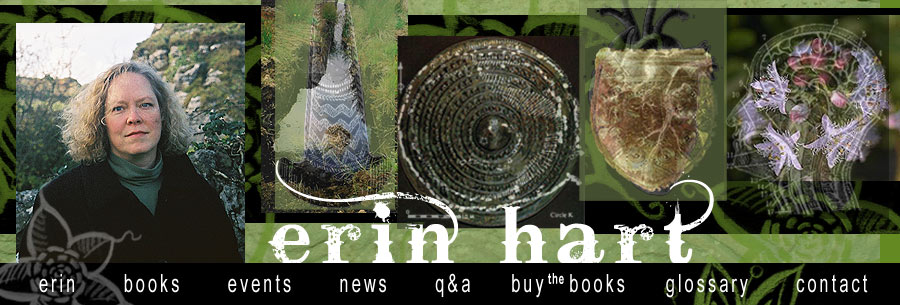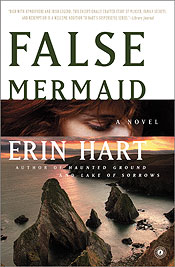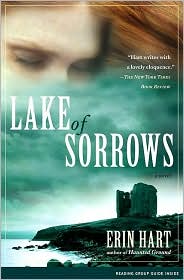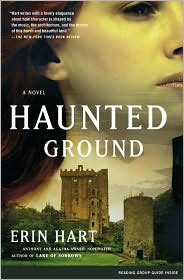Thanks a million to Mickie Turk for asking me to take part in the Writing Process Blog Tour. Mickie is a fellow member of the Twin Cities Chapter of Sisters in Crime, and the author of two stand-alone crime novels, The Delilah Case and Made in the Image, and is just completing the first book in her Clemsczak Cleaners Mystery Series, Cleaning Up The Bodies. You can find out more about Mickie and her work at: mickieturkauthorandfilmmaker.blogspot.com.
What am I working on?
I’m in the messy middle of a fifth novel, which is departing from the Nora Gavin/Cormac Maguire series in that it’s demanding to be set in 1933. So I’m imagining the main character, an Irish policeman-turned-archaeologist just might be Nora Gavin’s grandfather.
The story takes place in the Burren area of County Clare, where in the early 1930s Harvard University dispatched teams of archaeologists, sociologists, and anthropologists. It was also a time of great political upheaval in Ireland, as well as elsewhere in Europe, with the rise of nationalism in many countries—Germany in particular—with all that entailed. Ireland was in an interesting position, after achieving independence in the 1920s: many of their technical experts and high-ranking officials were actually from Germany and Austria, including a fellow called Adolf Mahr, who became the Director of the National Museum. Mahr was born in Austria, and became head of the Nazi Party in Ireland during the 1930s. My story is based on a real-life disappearance, but I’ve changed the details of actual events to fit the setting and characters I'm drawing.
How does your work differ from others in your genre?
Well, I’ve yet to find anyone else who writes a whole series about people buried and preserved for thousands of years in the mysterious Irish boglands! It’s my own little niche, I guess you could say. For years after hearing the true tale of a red-haired beauty whose severed head was found in a bog, I haunted Irish bookshops, looking for someone who had already written about bog people. As it happened, I found none, and it turned out to be a tremendous opportunity. I couldn't believe no one had chosen the bog for a setting. It seemed tailor-made for mystery. When I first envisioned the novel that became HAUNTED GROUND, I wanted it to include not just forensic science and archaeology—though those two elements are very much the focus of my work—but it's also about the many layers of history in a place like Ireland, as well as traditional music, and folklore, and mythology. So it’s that combination of essentials that I think makes my stories just a wee bit different from anyone else’s.
Why do you write what you do?
I’ve always been inspired by true stories, and have always started with real events that lend themselves to mysterious, history-connected stories. I love to develop fully-fleshed characters, and most especially I love writing about the connections between those characters, as well as their troubles, their flaws and their foibles. Part of the reason I write the sorts of stories that I do is in reaction to crime novels that are just intellectual puzzles, where the victim is an unpopular boor, and there are no real moral or psychological consequences. For me, reading and writing fiction is all about empathy, about sharing the experience of the people on the page. So my stories tend to be serious, a bit dark, but they always leave open the possibility of redemption.
How does your writing process work?
I always start with an idea based on something from real life—usually a recent bog find! THE BOOK OF KILLOWEN was based on the discovery of a 9th-century book of psalms in an Irish bog. From there, I begin populating the story with characters, and trying to imagine what might happen next. It’s usually the combination of the setting and the characters that helps fill out the plot. I do a lot of research before really beginning to write, but I continue with the research (including visiting Ireland) as I’m working on each novel, because I have to visit specific places that figure in the story to get them just right. I’m a complete pantser, which means that I have no idea how the story is going to end when I start writing. I write to find out what happens, if that makes sense. There are many drafts, and many walls covered in Post-It notes, and many scribbly pages that go nowhere, but help me find my way through the story. Writing a novel is almost like an excavation. I’m not adding, like a sculptor working in clay; I’m digging through details and backstory about the characters to find out more about them, and what’s most important.
For next Monday, June 9, I’m delighted to recommend a trio of excellent crime writers:
Judith Yates Borger
When the St. Paul Pioneer Press refused to pay for her little red two-seater convertible which was firebombed while she reported on a riot, Judith Yates Borger decided it was time to get a new gig. She began writing fiction and hasn't looked back. Borger draws on her 40+ years experience as a journalist to chronicle the escapades of her protagonist Skeeter Hughes, wife, mom, and reporter. In real life, Borger would never have taken the risks that come naturally to protagonist Skeeter. Her third Skeeter Hughes mystery, WHO BOMBED THE TRAIN?, was released June 1. Judy has also published short stories in three Twin Cities mystery anthologies. Those anthologies and her two other Skeeter Hughes novels, WHERE'S BILLIE? and WHOSE HAND?, were published in paper by Nodin Press. They are now available in ebook format from Amazon.com. Learn more about Judy and her work at www.JudithYatesBorger.com.
The next two wonderful writers were not able to participate in this Writing Process blog tour, but I thought you should know about their work in any case!
Sujata Massey
Sujata Massey was born in England to parents from India and Germany and grew up mostly in Saint Paul, Minnesota. She holds a B.A. in Writing Seminars from Johns Hopkins University and started her working life as a features reporter for the Baltimore Evening Sun. After leaving the newspaper, she moved to Japan, where she studied Japanese, taught English and began writing her first novel, THE SALARYMAN'S WIFE. This novel became the first of many in the Rei Shimura mystery series, which has won Agatha and Macavity awards and been nominated for the Edgar, Anthony, and Mary Higgins Clark awards. Her August 2013 release,THE SLEEPING DICTIONARY, is the first in a series of historical suspense novels featuring Bengali women who each play a role in making modern India. Sujata’s books have been published in more than 18 countries, and if she could redo her youth, she would have double-majored in history and a foreign language and spent a gap year (or two) abroad. Currently, she’s based near Washington, D.C. You can learn more about Sujata and her work at www.sujatamassey.com.
Ellen Crosby
Ellen Crosby is the author of six books in the Virginia Wine Country mystery series, as well as MOSCOW NIGHTS, a stand-alone mystery based loosely on her time as Moscow correspondent for ABC Radio News in the late 1980s. Before writing fiction, she also worked as a freelance reporter for The Washington Post and as an economist at the U.S. Senate. Her latest book, MULTIPLE EXPOSURE, was released in August 2013 by Scribner. It’s the first in a new mystery series featuring photojournalist Sophie Medina, the story draws on her insider knowledge of Washington politics, her journalism background, and her stint as a Moscow reporter. After living overseas for many years—England, Switzerland, France, Italy, Spain, and the former Soviet Union—Ellen, who has an undergraduate degree in political science and a masters in international affairs, now resides in the D.C. suburbs of northern Virginia. Find out more about Ellen and her work at www.ellencrosby.com.
Stories, artifacts, wordplay, research, and musings on archaeology, writing, literature, Irish music and more
Subscribe to:
Post Comments (Atom)










No comments:
Post a Comment